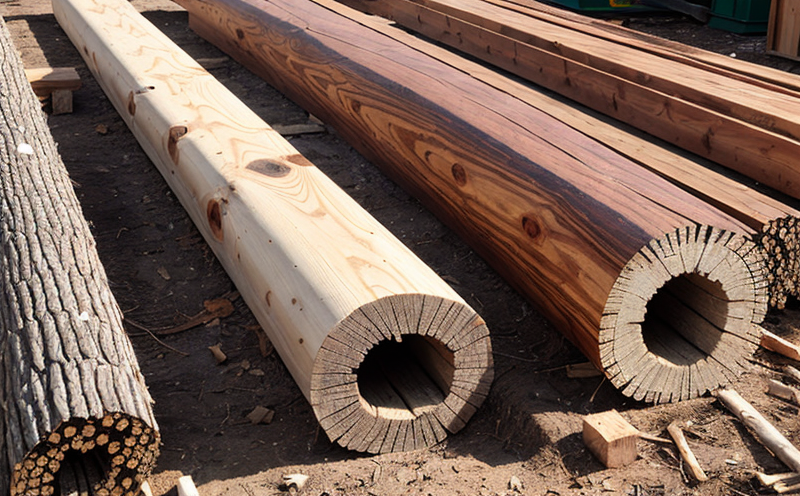Preservative Toxicity Testing on Soil Microorganisms
The testing of preservatives for their toxicity to soil microorganisms is crucial in agriculture and forestry. This testing ensures that the chemicals used in wood preservation do not negatively impact the environment or human health once they enter the ground after treatment. Wood preservation plays a vital role in protecting timber structures from decay, insects, and fungi. However, these treatments must be carefully managed to minimize their harmful effects on soil ecosystems.
The preservatives tested include various compounds such as copper-based formulations (CuIn), azole fungicides, and other biocides. The primary focus is on ensuring the efficacy of wood preservation while maintaining environmental safety standards set by international regulations like ISO 16340:2019 for soil microorganisms.
The testing process involves exposing specific strains of bacteria and fungi commonly found in agricultural soils to different concentrations of preservative solutions. The goal is to determine the minimum inhibitory concentration (MIC) at which the preservative begins to affect microbial growth. This data helps manufacturers optimize their formulations to achieve both effective protection and minimal environmental impact.
Understanding the toxicity profile of these chemicals under controlled conditions allows for informed decision-making in product development, ensuring compliance with local and international standards. The results also guide regulatory bodies in setting appropriate guidelines for safe application rates and methods.
Why It Matters
The importance of preservative toxicity testing cannot be overstated given the critical role wood plays across multiple sectors, including construction, infrastructure development, and agriculture. By conducting thorough assessments, we ensure that wood preservation products contribute positively to sustainable practices without compromising environmental integrity.
- Reduces chemical runoff into water bodies
- Promotes healthier soil microbiomes
- Supports long-term durability of wooden structures
- Aids in meeting stringent international regulations and standards
These tests are essential for the development of safer, more effective preservatives that balance performance with environmental responsibility. They also provide valuable insights into potential risks associated with certain compounds, allowing for continuous improvement in formulation design.
Scope and Methodology
| Test Specimens | Microorganisms Tested | Testing Conditions | Analysis Techniques |
|---|---|---|---|
| Wood samples treated with preservatives | Bacteria, fungi common to agricultural soils | Aerobic and anaerobic conditions | MIC determination, colony-forming unit (CFU) counts |
The testing process begins by selecting representative wood samples that have been treated with various preservatives. These samples are then incubated under controlled environmental conditions to simulate real-world scenarios where the treated wood would be exposed to soil microorganisms.
Microorganisms such as Bacillus subtilis, E. coli, and fungal species like Fusarium oxysporum are inoculated onto the samples in controlled environments that mimic both aerobic and anaerobic soil conditions. Over time, the growth of these microorganisms is monitored using colony-forming unit (CFU) counts to measure any inhibition caused by the preservative.
The minimum inhibitory concentration (MIC) is determined as the lowest concentration at which there is a significant reduction in microbial activity compared to untreated controls. This value provides crucial information about the effectiveness of different preservatives against soil microorganisms, helping researchers and developers tailor their formulations more precisely.
Environmental and Sustainability Contributions
- Promotes sustainable agricultural practices by enhancing wood durability in agrostructures
- Reduces the need for frequent replacement of wooden components due to decay or insect damage
- Serves as a key component in developing environmentally friendly preservatives that are less harmful to soil ecosystems
- Facilitates compliance with international standards and regulations aimed at minimizing environmental impacts
The results from these tests contribute significantly to the development of more sustainable wood preservation techniques. By identifying which preservatives have minimal adverse effects on soil microorganisms, we can promote practices that enhance overall ecosystem health while still providing necessary protection for wooden structures.
These efforts align with broader sustainability goals by supporting the use of renewable resources in a way that minimizes harm to natural environments. This testing ensures that wood preservation contributes positively to sustainable development initiatives worldwide.





